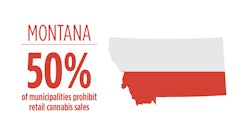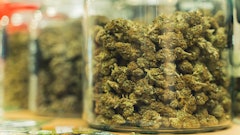
The Montana Department of Revenue has announced preparations for licensing adult-use cannabis businesses, according to an NBC Montana report.
The department will make cultivation and retail licenses available by Oct. 1, 2021, the news outlet reported.
“There’s a lot of work ahead before the first legal sale of non-medical marijuana in Montana, and before the first license is issued,” Department of Revenue Director Gene Walborn told NBC Montana. “We look forward to working with the public and all interested parties as we develop guidelines around this new industry to move it forward, while also protecting public safety and raising revenue for the state of Montana.”
Under Montana’s recently approved adult-use cannabis law, only licensed medical cannabis businesses can apply for adult-use licenses for the first 12 months after they become available, according to the news outlet, and the Montana Legislature is expected to address additional regulations for the program during the upcoming legislative session.






















